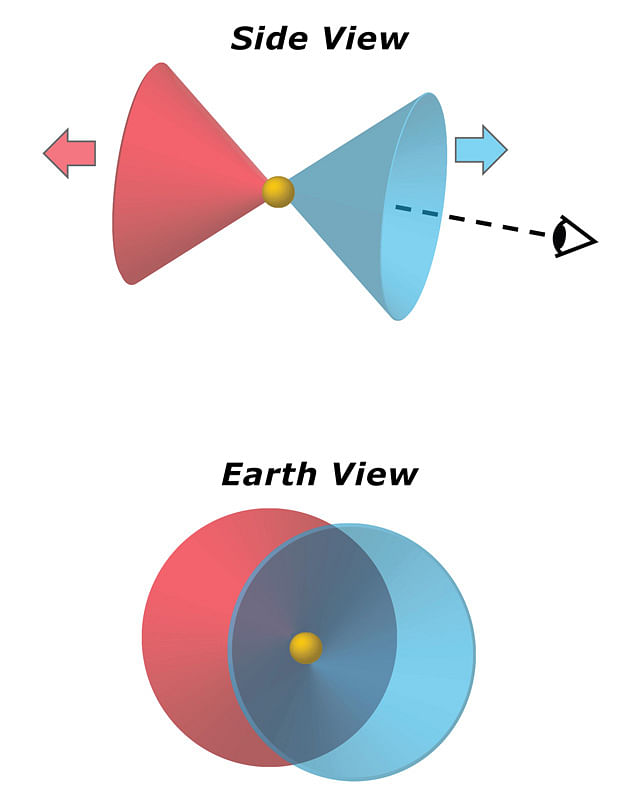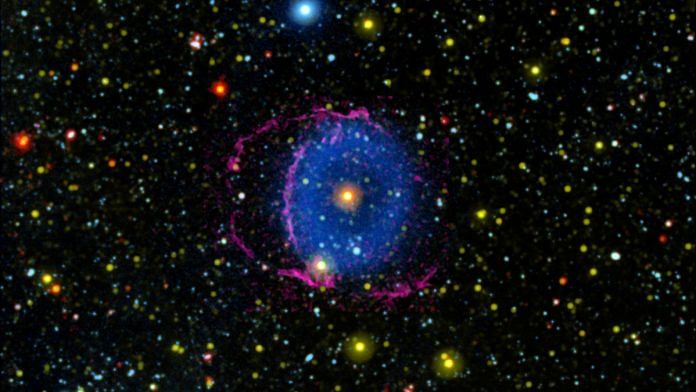Bengaluru: Scientists have finally found an answer to the origin of the Blue Ring Nebula, a blue-hued cloud of dust and gas, after 16 long years.
A new study, which draws from state-of-the-art theoretical models, has proposed that the nebula resulted from the collision of a smaller star into a larger one, leading to the formation of a single new remnant star. This is the first observation of a nebula so early in a remnant star.
The findings were published in the journal Nature Wednesday.
Also read: ‘What does Europe smell like?’ — 3-year project set to archive key scents from history
TYC 2597-735-1
The new resultant star in the Blue Ring Nebula is called the TYC 2597-735-1, and it is about 6,300 light years away from the solar system. It appears as a normal star to the visible eye, but under ultraviolet (UV) light, this star seems to be surrounded by a blue blob.
The telescope that made this discovery in 2004 was NASA’s now-retired, space-based Galaxy Evolution Explorer (GALEX). GALEX was used to study the history of star formations across the universe by observing young stars in other galaxies.
Merged star systems are common but the process of their formation has been difficult to observe because of the debris that is formed around a merged star from the collision.
But the Blue Ring Nebula is merely a few thousand years old, and is the first known merged star at such as early stage of its formation. It is visible only in far-UV.
GALEX observations and subsequent simulations from these findings have indicated that the nebula consists of two cone-shaped clouds that are moving away in opposite directions from the star. One cone’s base is travelling directly towards earth and a part of the other cone is visible behind it.

Discovery process
The GALEX observations were first made in 2006, which showed evidence of a shock-wave, suggesting the gas composing the Blue Ring Nebula had been expelled by some violent event around the central star. Data from other telescopes showed that the central star in the nebula was pulling in a lot of material to its surface. But where was such material coming from remained a mystery.
The new study said the team of researchers had initially suspected the star to be preying on a planet. But subsequent GALEX data identified a disk of dust orbiting the star. Observations also indicated that there was too much material to have just come from one planet.
At this point, the scientists also realised that there had been a violent merger of stars, and a smaller star seemed to have gotten sucked inside a bigger one.
This merger had created a cloud of dust and gas that was sliced in two by the disk of matter that formed around the star. The cones then started to move away from each other, one in the direction of earth.
As the debris moved away from the star, over thousands of years, it collided with hydrogen molecules and other matter in space. The collisions excited the hydrogen molecules, causing them to radiate in a specific wavelength of far-UV light. Over time, this glow became bright enough for GALEX to see.
Also read: Jupiter’s icy moon Europa can glow in the dark even with no sun, NASA scientists find



